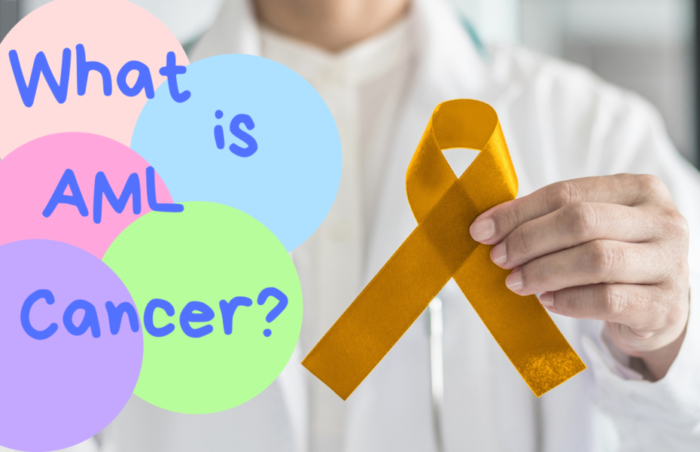Age: 5 Diagnosis: Bilateral Optic Pathway Gliomas and Gliomas of the Hypothalamus and Thalamus Meet…

What is Acute Myeloid Leukemia (AML)?
Although pediatric AML occurs less frequently than adult AML, it’s still the second most common form of childhood cancer. We believe it’s important to understand the various forms of childhood cancer, in order to truly comprehend exactly what it is we are all facing in the fight against childhood cancer.
What Happens
Acute myeloid leukemia (AML) is a form of blood cancer that typically begins in cells that turn into white blood cells. However, AML can also form in other types of blood-forming cells. AML will begin in the bone marrow, but it tends to quickly move into the blood. Other parts of the body are also at risk including the central nervous system, liver, spleen, and more.
Acute cancers, such as AML, are faster growing than chronic cancers. When AML forms in the bone marrow, the cells will not mature as they should. These “immature” cells, called blast cells, will build up in the body and clog up the blood. Leukemias will cause bone and joint pain, fatigue, weakness, pale skin, bleeding or bruising, fever, weight loss, and other symptoms.
There are several other names that are commonly used to describe AML, such as:
- Acute myelocytic leukemia
- Acute myelogenous leukemia
- Acute granulocytic leukemia
- Acute non-lymphocytic leukemia
Causes and Risk Factors
In many cases, the underlying causes of AML cancer are unknown, but there are some known risk factors. Genetic conditions are the most common risk factor, and those with relatives with AML cancer tend to have an increased chance of developing cancer themselves. Exposure to radiation also causes an increased likelihood, so doctors recommend avoiding radiation in its various forms whenever possible, especially in young children.
Treatment
 Acute leukemias grow rapidly, so they need to be treated (typically with chemotherapy) as soon as they are found. Robyn Oldham, a member of Dr. Medin’s lab at the Medical College of Wisconsin who is working to optimize immunotherapies for MM, AML and lymphoma, says, “AML is a very heterogenous disease, presenting differently between patients, making it challenging to treat, but over the past few decades 5-year survival rates [for AML] have reached 70%, through the use of intensive chemotherapy regimens.”
Acute leukemias grow rapidly, so they need to be treated (typically with chemotherapy) as soon as they are found. Robyn Oldham, a member of Dr. Medin’s lab at the Medical College of Wisconsin who is working to optimize immunotherapies for MM, AML and lymphoma, says, “AML is a very heterogenous disease, presenting differently between patients, making it challenging to treat, but over the past few decades 5-year survival rates [for AML] have reached 70%, through the use of intensive chemotherapy regimens.”
Sadly, even with such advances in treatment techniques, 30% of those patients will have a relapse. Current treatments can also cause long-term side effects due to toxicity. “That’s why we,” asserted Oldham, “and of course many others, are working on more targeted and specific therapies which will hopefully improve outcomes and reduce the long-term negative impacts of therapy.”
Support Robyn Oldham and the many medical researchers working to find a safe and effective cure for AML by donating today.
Statistics
- The American Cancer Society, estimates that in 2019 there will be roughly 21,450 new cases of AML diagnosed
- The American Cancer Society also estimates that in 2019 there will be about 10, 920 deaths caused by AML
- AML is the second most common pediatric cancer
- 30% of AML patients will have a relapse
- Leukemias account for 30% of all cancers in children
(Statistics listed were provided by the American Cancer Society and the Medical College of Wisconsin.)






